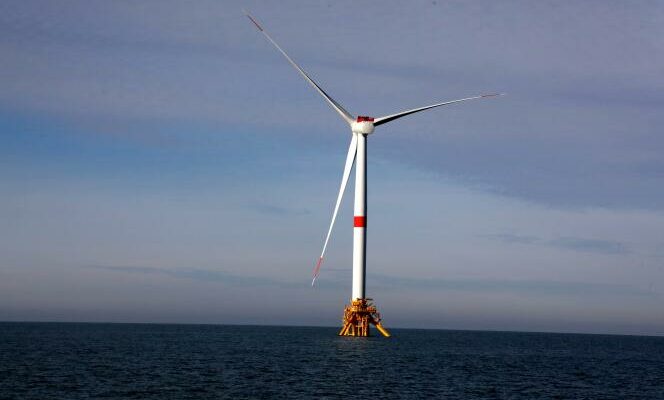Moving away from the coast means sailing on sometimes uncertain waves. France is still awaiting the commissioning of its first three small pilot farms for floating wind power. Projects tossed around depending on the situation, after a call for tenders concluded in 2016 by the Ecological Transition Agency.
Offshore wind power can be installed in two ways – either “placed” on foundations, the most common case, or “floating”, in other words connected to the seabed by anchor lines, in deeper areas. If it passed the prototype stage, this second option would allow electricity production even further offshore. Enough to minimize conflicts over the use of the sea and… capture stronger winds.
The demonstrators each plan three wind turbines in the Mediterranean. EDF hopes to put it into service for “back to school” of September. In Provence, 17 kilometers off the coast of Port-Saint-Louis-du-Rhône (Bouches-du-Rhône), its machines will be supposed to produce the equivalent of the annual electricity consumption of 45,000 inhabitants.
More uncertainty surrounds the other two projects. That of Engie is located in the Gulf of Lion, between Leucate (Aude) and Le Barcarès (Pyrénées-Orientales). That of the small French energy group Qair, off the coast of Gruissan and Port-la-Nouvelle, also in Aude. Both would rather have a horizon of 2025, at best.
“Different exogenous shocks”
” Viability [de ces fermes pilotes] is in play “ And “their economic balance is (…) fundamentally called into question »alerted the three companies in February in a letter to the Minister of the Economy, Bruno Le Maire, as well as to the Minister for Industry and Energy, Roland Lescure.
Discussions with the government continue. In view of “different exogenous shocks” (Covid-19 pandemic, war in Ukraine, inflation in the cost of raw materials for suppliers, increase in interest rates with banks), companies are asking the State to strengthen its support.
“Our project will not be able to go to the end without further intervention”, asserts Olivier Guiraud, general director of marine renewable energies at Qair. The company is the majority shareholder of Eolmed (with 63%), the shipyard off the coast of Gruissan. It is the smallest of the three project leaders, and undoubtedly also the most alarmist, despite the support of TotalEnergies (20%).
In 2022, the forecast cost of Eolmed was around 308 million euros. It now reaches 374 million and already includes 78 million euros in state aid: half in the form of investment subsidies, the other in repayable advances. “Before even considering new subsidization”Mr. Lescure’s entourage underlines “the need to collectively regain control of the industrial control of this project, because its costs and schedule are very far from being met.”
You have 36.95% of this article left to read. The rest is reserved for subscribers.
